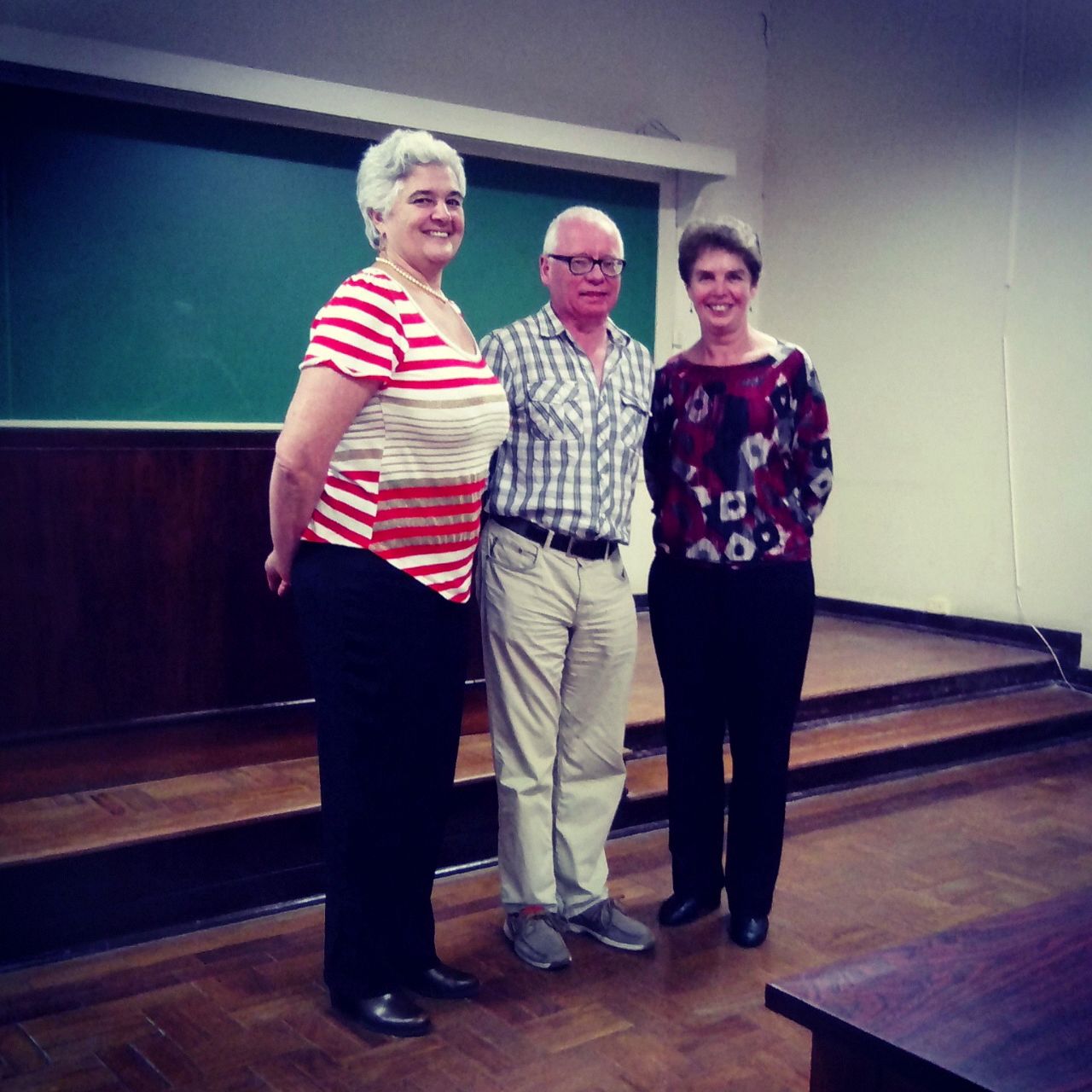Kaye Basford e John Hinde visitam o LCE
Kaye Basford (University of Queensland, Brisbane, Austrália) and John Hinde (National University of Ireland, Galway, Irlanda) em visita ao LCE, nos períodos de 01 a 13/08/2015 e 01 a 08/08/2015, respectivamente, participaram ativamente do V Encontro dos Alunos do Programa de Pós Graduação em Agronomia (Estatística e Experimentação Agronômica), realizado nos dias 06 e 07/08/2015.
No dia 06/08, John proferiu a palestra Mixtures, mixtures, everywhere!
Mixture models have now become an important tool in statistical modelling, with the EM algorithm being an important driver in their popularization and applicability. This talk will present the basic ideas and discuss a range of different mixture models and their use in addressing specific applied problems. Examples discussed will include: mixtures of non-linear regression models for fish growth studies; mixture orthogonal regression models for sugarcane SNP data; regression mixture models for outlier detection/accommodation; mixture models for overdispersion and zero-inflation.
Enquanto que no dia 07/08, Kaye proferiu a palestra Multiway Pattern Analysis in Crop Improvement Programs.
As a biometrician at the interface between statistics and quantitative genetics, I have used pattern analysis methodology to analyse and interpret data from crop improvement programs on soybean, wheat, cotton, maize, sugarcane, groundnut, common bean, adzuki bean, Lucerne, sunflower and eucalyptus. Clustering and ordination techniques, combined with appropriate displays, facilitate the interpretation of different types of three-way three-mode data. This will be illustrated using genotype × environment × attribute data collected from a multi-environment trial where the aim was to select “better” genotypes for drought tolerance in tropical maize. A second example is concerned with obtaining a detailed understanding of the heritable variation in the wheat genome and directly translating this knowledge into gains in wheat breeding. This was achieved via a Wheat Phenome Atlas (a collection of diagrammatic representations of chromosome regions that affect trait inheritance) and three-way principal component analysis of the genotype marker-trait association profiles. These examples show that appropriate summaries of the variation in multiway data arrays provide insight into complex patterns of response, describe the breeding programs and assist in selection.
24/08/2015

Kaye Basford e John Hinde visitam o LCE



